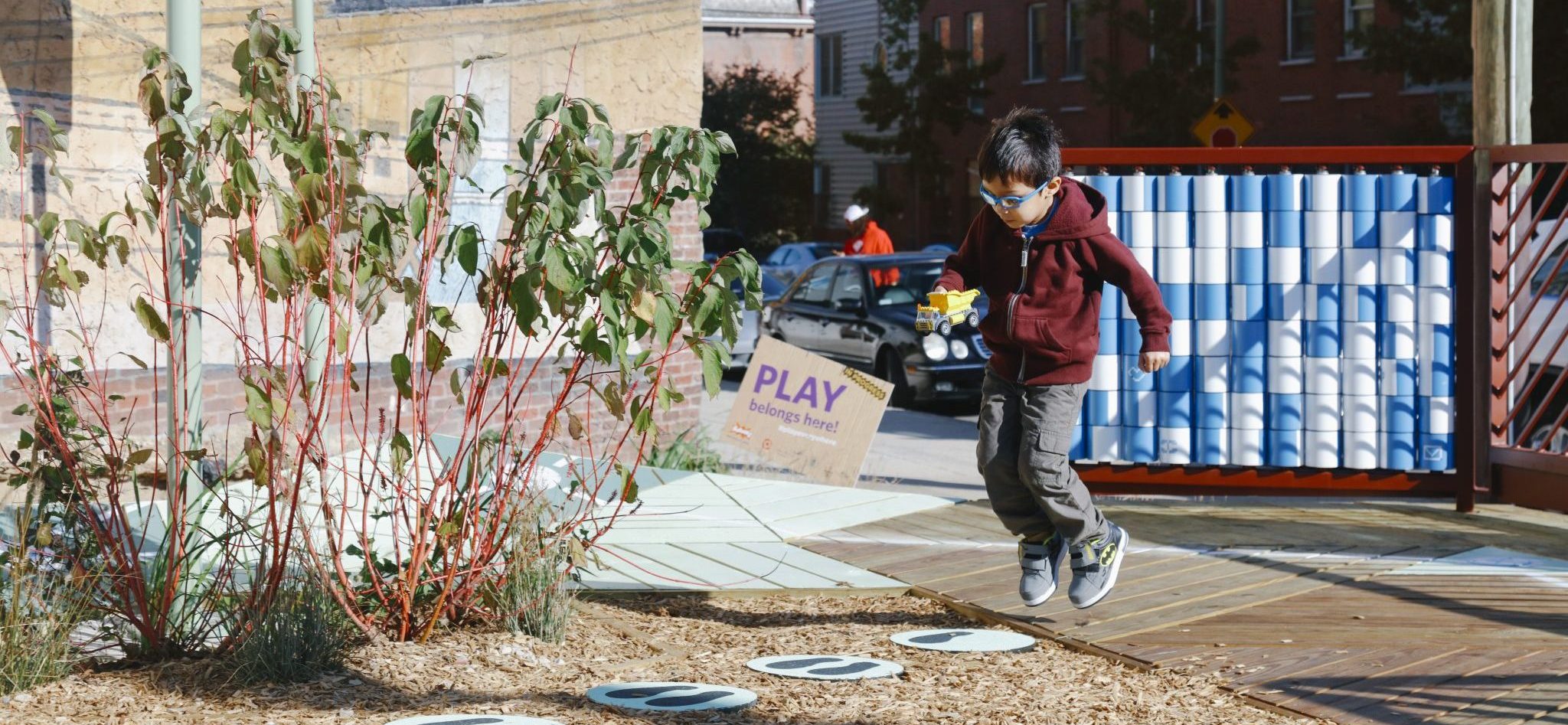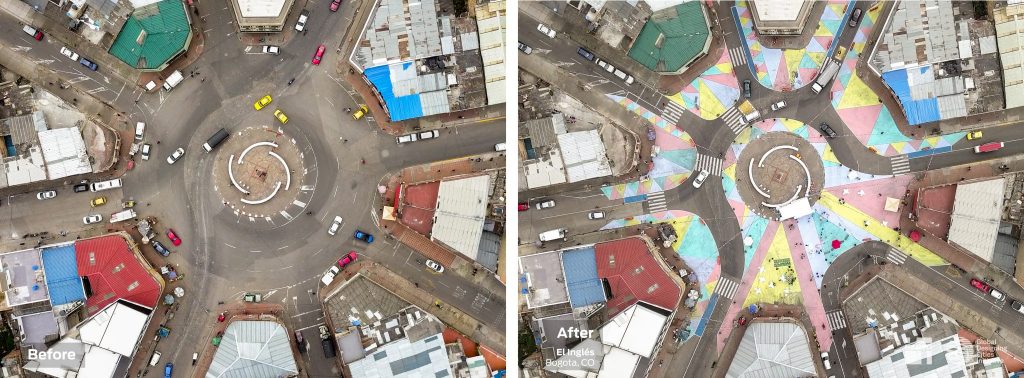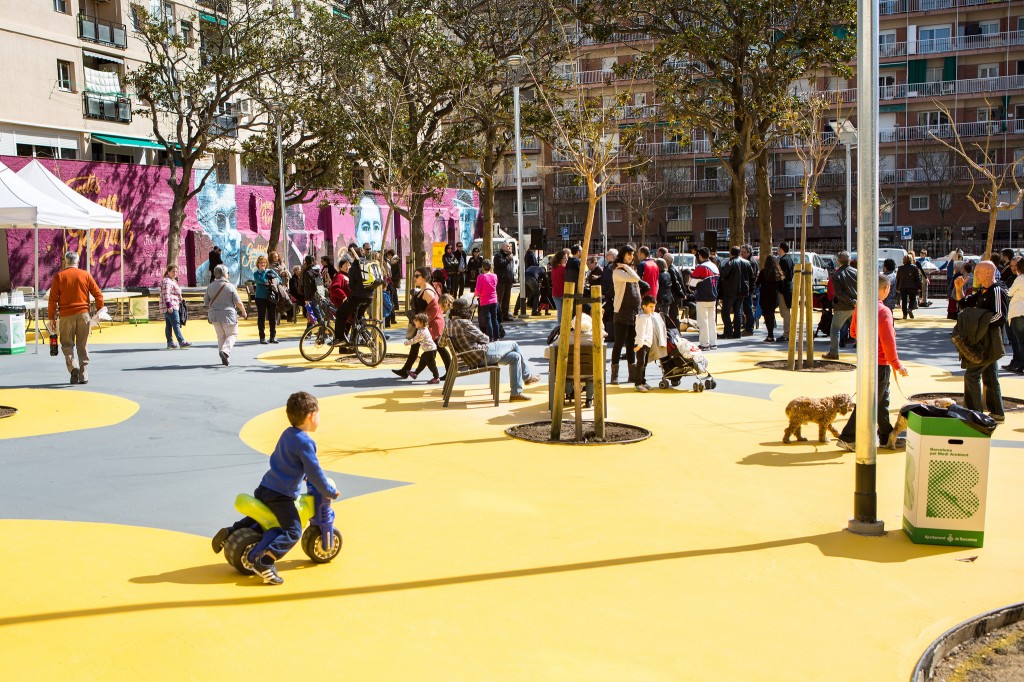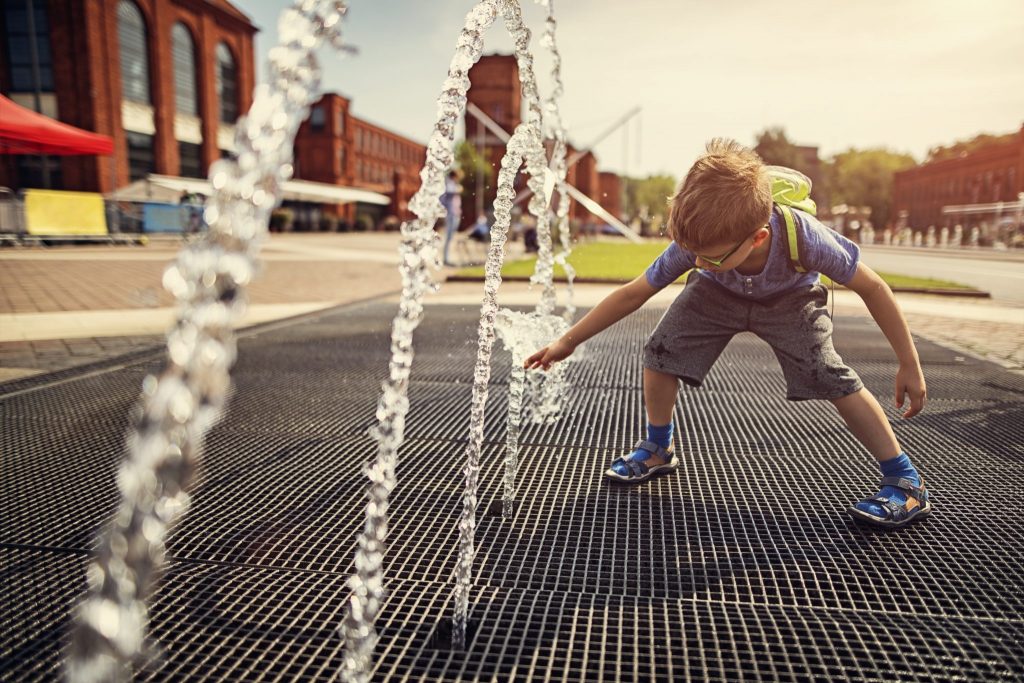26 March 2021
for Madrid Nuevo Norte

More than half of the world’s population now lives in urban environments, and this trend will increase in the coming decades. According to the UN-Habitat programme, 60% of the inhabitants of these cities will be under the age of 18 by 2030, so designing child-friendly cities is becoming a particularly crucial challenge for everyone’s future. And today, this challenge is already being addressed by numerous initiatives around the world.
According to statistics, children today spend less time playing than previous generations, outdoor play has been reduced, along with opportunities for social interaction in the street, and at the same time, sedentary lifestyles, stress and the abuse of technology as the only means of entertainment define the daily routines of young people. On the other hand, safety risks in public spaces, traffic and pollution are factors that discourage parents from giving their children more autonomy in the urban environment.
In order to mitigate this trend, several proposals have been developed with the goal of designing urban interventions that introduce play into the places and situations where children carry out their activities on a daily basis. This ranges from the library to the bus stop, the hairdresser’s, supermarket, car park or on the way to school.
Children can improve their cognitive, emotional, social, and physical skills through play, even when they are not in school. This is how Playful Learning Landscapes (PLL), an initiative with several pilot projects in cities in the United States, such as Urban Thinkscape in Philadelphia, a vacant lot next to a bus stop that has been transformed into a place for play that includes, among other amusements, a three-dimensional hopscotch and several vertical puzzles that have become part of the street furniture.

The objectives of this project are framed in the Urban Play Framework (UPF) developed by the global consultancy Arup, together with the LEGO Foundation and the UK’s Royal Town Planning Institute for the Real Play Coalition, a body that promotes the importance of play for children’s development and education. This approach is set out in detail in a report launched in 2020 at the tenth World Urban Forum, an event organised by UN-Habitat.
UPF is a method to promote learning through play in certain urban environments and to allow the data obtained to be used to promote a broader experience of educational play in cities. Its application includes analysis of the socio-economic data of the neighbourhood; exploratory walks to detect hazards, friendly zones, traffic flow and urban barriers; interviews with experts and community representatives, as well as creative workshops where children can offer their point of view.

Workshop on co-creation of play spaces in public spaces with children living in the informal settlement of Khayelitsha, on the outskirts of Cape Town (South Africa).Photo:ARUP.
The method has already been tested in London and Cape Town. In Barnet, a suburb of the British capital, one of the opportunities identified is to get children to play on the various means of transport on which families are “stuck” for a period of time each day. While in Khayelitsha an informal settlement on the outskirts of Cape Town with security problems, a co-creation workshop provided an opportunity to activate a network of play spaces that foster different skills connected by safe routes.
There is a growing awareness of the need to make both pre-existing urban environments and new developments more child-friendly. In its report Cities alive:Designing for urban childhoods, Arup includes a number of case studies that confirm this trend. This is the case, for example, in Bogotá (Colombia), where the city council is embarking on the creation of a network of 1,200 new parks and playgrounds, along with other municipal initiatives, such as Plazoletas Bogotá, which aims to recover urban spaces for pedestrians, and child-priority zones.

Pedestrianisation of a roundabout in the El Inglés neighbourhood in Bogotá (Colombia), as part of the Plazoletas Bogotá municipal initiative. Photo: NACTO-GDCI.
Another initiative is the Livable Cities Project, which has redesigned 14 parks in India, giving 1,400 children access to safe play spaces and inviting citizens to cycle, walk and socialise at outdoor events.In the United Kingdom, the city of Leeds successfully increased visits by families with children to the historic city centre thanks to a temporary initiative to create temporary parks.
Other cities around the world, such as the German city of Freiburg; Tirana in Albania; the Canadian city of Vancouver; and Seoul, South Korea are developing projects to make neighbourhoods more child-friendly, with an emphasis on improving pedestrian areas and routes and creating safe play areas.
Interesting initiatives are being carried out in this direction in Spain, such as the superblocks strategy in Barcelona, which proposes restricting traffic to the main streets around groups of blocks in several neighbourhoods in the city’s expansion area, forming semi-pedestrianised areas measuring 400 by 400 metres. This converts the interior streets that were previously occupied by cars into safe citizen spaces for culture, leisure, community activities and children’s play.

Superblocks, a project under development in Barcelona’s Eixample district, has created safe spaces for play in areas previously occupied by cars. Photo: Barcelona City Council.
In Madrid, the largest urban transformation project in the capital, Madrid Nuevo Norte, will place an emphasis on the diverse uses of public space, with a special focus on children and youth. For more than three years, DCN’s Social Engagement area has been gathering information on what the ideal city would be like for children in the surrounding neighbourhoods, and in Madrid in general, by asking them directly how they would like to use public space, in the framework of different formats of co-creation workshops. The latest work so far is currently being prepared in collaboration with the UN-Habitat’s Block by Block programme. The workshop uses the construction game Minecraft to gather information on children’s needs and priorities, which will be very valuable to take into account in later phases of the project.
Urban parks are particularly attractive and have great potential to be transformed into spaces for educational play. In the Netherlands, in the heart of Rotterdam’s city centre, Speeldernis park has made every child’s explorer’s dream come true: this leafy space has been transformed into an enormous playground and activity park in the middle of nature, where camping is even allowed.
Nature has also made its way into the daily routes of the children who frequent the Sanlihe River ecological corridor in the city of Qian’an, China, 135 hectares rescued from pollution and criss-crossed by a network of paths that connect schools and residential areas.

Water can be integrated as another play element in the public space to counteract the heat-island effect. Cities like New York or Copenhagen are adapting their playgrounds to the challenges of climate change.